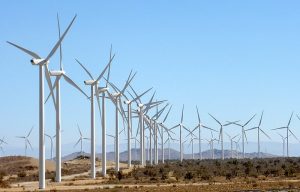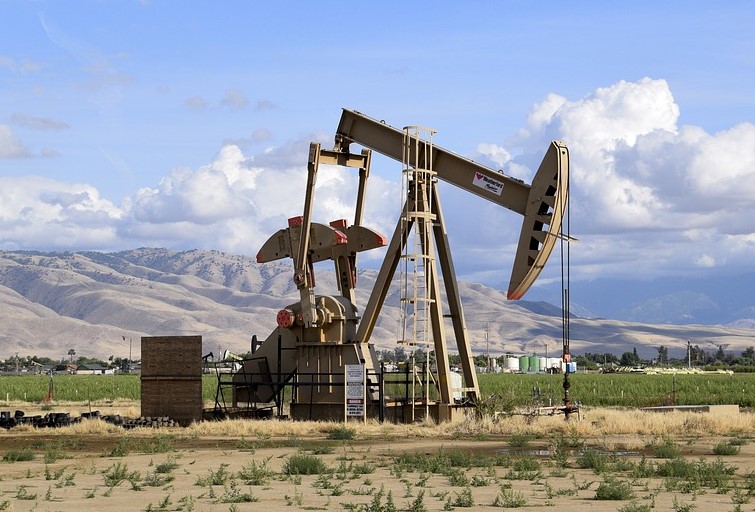
By Michael Burger and Hillary Aidun
Last week the Sabin Center and the American Bar Association held an event on addressing landowner concerns in renewable energy siting. Wind and solar farms often spark siting battles between local residents who welcome renewable energy projects and their neighbors who are concerned about visual or other impacts. But renewable generation is not sufficient to decarbonize the electric sector; infrastructure that delivers clean electricity to consumers is also critical. (The Sabin Center’s Renewable Energy Legal Defense Initiative provides pro bono legal counsel to community members who support renewable energy projects.)
Transmission lines are, like generation facilities, often held up by litigation. Following a slew of recent cases scuttling or hamstringing new oil and gas pipelines, some have commented that it may now be even harder to develop transmission capacity for renewable energy. However, as explained below, siting decisions for pipelines and transmission lines are governed by different laws, and while both are subject to environmental review, their environmental impacts are not comparable. The recent pipeline decisions turned mostly on water quality concerns that are specific to oil and gas projects. Power lines present their own issues that need to be addressed, to be sure, but they are unlikely to be impacted by the recent spate of pipeline cases.
Three Regulatory Regimes
Natural gas, oil, and electricity transmission are each subject to distinct regulatory schemes. Construction and operation of an interstate natural gas pipeline requires a certificate of public convenience and necessity from the Federal Energy Regulation Commission (“FERC”) under Section 7 of the Natural Gas Act. Local natural gas distribution lines—which connect consumers to interstate pipelines—are owned and operated by local distribution companies, which are typically regulated by state public utility commissions. In contrast to the natural gas permitting scheme, no federal law provides a specific approval process for siting oil pipelines. Depending on the state, a pipeline company may need the state utility commission, governor, or legislature to approve a proposed route; interstate pipelines may require approvals from multiple states. However, both natural gas and oil pipelines that cross the border to Canada or Mexico require a Presidential permit. Additionally, both types of pipelines need approval from a number of federal agencies depending on their routes and potential impacts. For example, a project that may discharge dredged or fill materials into waters of the United States, or that crosses navigable waters, requires a permit from the U.S. Army Corps of Engineers (“the Corps”); a pipeline that traverses public lands needs a right-of-way from the Bureau of Land Management, U.S. Forest Service, or other agency with jurisdiction over the land. Before a federal agency can issue such a permit it must comply with the National Environmental Policy Act (“NEPA”), issuing either an environmental impact statement or a determination that a full review is not needed.
States have jurisdiction over the siting of interstate electricity transmission as well as the local distribution lines that deliver electricity directly to customers. Regulated utilities typically propose new power lines to the public utility regulator, although some states have a separate siting authority, and merchant providers of transmission lines are more lightly regulated. (New York’s recently enacted Accelerated Renewable Energy and Community Benefits Act aims to streamline the processes for upgrading and expanding electricity transmission.) Like natural gas and oil pipelines, electricity transmission often requires additional permits from federal agencies, depending on whether the power line will cross or impact federal waters or federal land. These permitting decisions may then subject transmission lines to NEPA, among other statutes.
Three Recent Pipeline Setbacks
Three pipelines have recently suffered legal blows: the Atlantic Coast Pipeline, Keystone XL, and the Dakota Access Pipeline. However, because these stumbling blocks arose out of water quality issues that are specific to fossil fuel pipelines, they are unlikely to affect electricity transmission.
Nationwide Permit 12 (“NWP 12”) is a major piece of the regulatory puzzle for oil and gas pipelines as well as transmission. Under Section 404 of the Clean Water Act, any party seeking to construct a project that will discharge dredged or fill material into waters within the Corps’ jurisdiction must obtain a permit. The Corps issues nationwide permits for categories of similar activities that will have minimal environmental effects, both individually and cumulatively. A nationwide permit can last for up to five years, after which time the Corps must reissue it or the permit expires. NWP 12 authorizes discharges of dredged or fill material into jurisdictional waters as part of the construction, maintenance, repair and removal of utility lines. Utility lines include power lines as well as oil and gas pipelines, among other things. The Corps issued NWP 12 in 1977, and most recently reissued NWP 12 in 2017.
In April of this year, the U.S. District Court for the District of Montana vacated NWP 12, concluding that the Corps acted arbitrarily and capriciously by issuing the permit in 2017 without consulting the Fish and Wildlife Service or the National Marine Fisheries Service, as required by the Endangered Species Act. The ruling raised a number of questions, including about the fate of power lines. In May, the Court modified its earlier vacatur of NWP 12 to cover only future oil and gas pipeline construction. The Court explained that in arguing that the Corps acted unlawfully, the plaintiffs focused on threats posed by the construction of major oil and gas pipelines such as Keystone XL.
The Corps appealed the District Court’s amended ruling to the Ninth Circuit Court of Appeals. The Corps also sought a stay, pending appeal, of the nationwide injunction on using NWP 12 to approve new pipelines. The Ninth Circuit denied a stay. In June Duke Energy and Dominion Energy announced that they were canceling the planned Atlantic Coast Pipeline due to the regulatory uncertainty created by the NWP 12 litigation—even though the Supreme Court had just delivered the companies a major victory, ruling that the pipeline could be built across the Appalachian Trail. The following day the U.S. Supreme Court stayed the District Court’s injunction, except as applied to the Keystone XL Pipeline.
The NWP 12 litigation has thus impeded two major pipelines: Keystone XL and Atlantic Coast. However, NWP 12 will remain in effect for utility lines other than oil and gas pipelines—such as transmission lines—while on remand. Transmission projects can therefore continue to rely on NWP 12 until the Corps completes the consultation process as directed by the District Court.
Meanwhile, the controversial Dakota Access Pipeline continues to be mired in litigation, including a court order to empty the pipeline, which for the moment is stayed. In 2017 the Corps granted an easement to construct the pipeline under Lake Oahe, a reservoir located in North and South Dakota near the reservations of several American Indian Tribes. In doing so, the Corps determined that a full environmental impact statement (“EIS”) was not needed. After a number of tribes challenged that decision, the District Court for the District of Columbia determined that the Corps’ analysis failed to address experts’ concerns about the potential for leaks and spills, including: that the pipeline’s leak-detection system was unlikely to work; that the operator had a history of spills; and that the Corps relied on an unrealistic worst-case-scenario in assessing the risks of a potential spill. The Court remanded to the Corps for further analysis. The Corps again determined that an EIS was not needed. In March of this year, following another challenge by the plaintiff tribes, the Court found that serious gaps remained in the Corps’ analysis and ordered the Corps to develop a full EIS. In July, the Court then vacated the easement and ordered that the pipeline be emptied while the Corps completes the EIS, concluding that the seriousness of the NEPA violations justified this extraordinary remedy. The Corps sought a stay in the D.C. Circuit. In August the appellate court issued a mixed ruling denying a stay of the easement vacatur but staying the order that the pipeline be emptied, holding that the District Court had not made the necessary findings to justify an injunction. Last week the plaintiffs returned to the District Court seeking another injunction.
Although the Dakota Access Pipeline is continuing to operate, the litigation has created uncertainty for the project and underscored that public opposition is increasingly stymying efforts to build new oil and gas pipelines. Importantly, the current controversy centers on risks associated specifically with pipeline leaks and spills. The Dakota Access case is therefore unlikely to cast a similar pall over electricity transmission.
The Trouble With Transmission: A Different Set of Issues
While transmission lines have faced their own litigation, legal challenges arise out of different types of issues. While leaks or spills of hazardous materials can occur during power line construction, such risks can usually be mitigated—and unlike oil and gas pipelines, power line operation does not pose such risk. Moreover, since most interstate transmission lines are located aboveground, they generally do not require the type of directional drilling or trench-digging needed to bury pipelines. In narrowing the NWP 12 vacatur to block only new oil and gas pipelines, the Montana Court noted that the risks of increased sedimentation and horizontal directional drilling used during utility line construction are likely to be particularly severe when constructing oil and gas pipelines. (Local distribution lines are more likely to be buried than interstate transmission lines, especially in newer residential areas.)
Cases seeking to stop power lines have tended to focus on visual impacts, protected species, and the effects of vegetation- and tree-clearing. For example, a challenge to the Sunrise Powerlink Project in California raised concerns about federal agencies’ analysis of fire risk, visual resources, bird and bat mortality, and watershed impacts—but not discharge into navigable waters. A recent complaint filed to block the B2H power line—which is proposed to run from Oregon to Idaho—alleged threats to visual resources and sage grouse habitat associated with tree-clearing. Last year the D.C. Circuit vacated a permit that the Corps granted to construct a transmission line across the James River in Virginia, concluding that, because of the location’s historic significance, the Corps needed to prepare an EIS to analyze visual impacts. Other transmission projects have been blocked by state utility regulators on non-environmental grounds; for example, the New Hampshire Supreme Court recently affirmed the state siting board’s determination that the Northern Pass Transmission Line could unduly interfere with the “orderly development of the region.”
The energy transition demands a rapid build-out of utility scale renewable energy generation, which in turn demands the rapid build-out of transmission lines to carry the clean energy to consumers. Though they contribute to climate change mitigation, the construction and operation of transmission lines also have adverse environmental impacts that must be addressed and they will, without question, continue to face legal challenges. But the impacts differ from oil and gas pipelines. While both will in many (or all) instances trigger federal or state environmental review, the recent cases that have shaken the oil and gas industry should affect transmission only to the extent that they make plain the urgent need to transition from fossil fuels to renewable energy.




